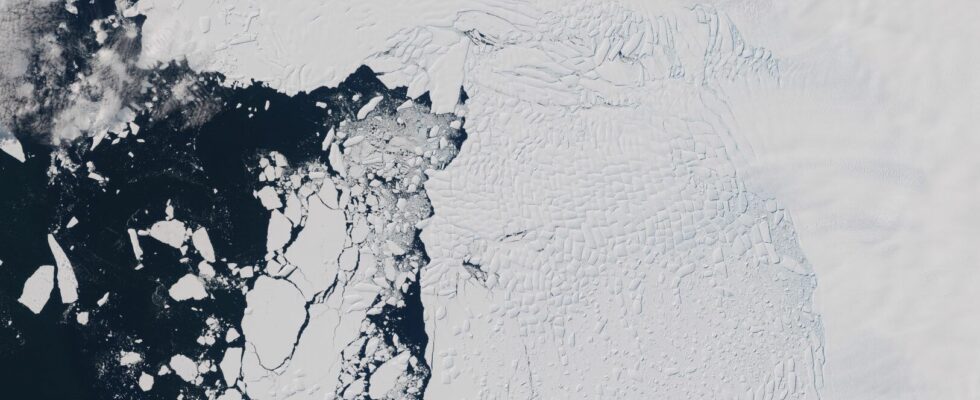A scientific team has trained artificial intelligence to recognize cracks in radar images from Sentinel-1 satellites. Results from the Thwaites Glacier in Antarctica show rapid changes in pace over the past 6 years. This tool will be used for long-term monitoring.
The results will also be correlated with other measurements (thickness, temperature, salinity, etc.).
Cracks on the Thwaites Glacier
The main tool for observing Antarctic glaciers has so far resided in the ability to photograph them regularly. Which is important by the way, just like the study of the temperature of the water or the atmosphere which overlooks the frozen continent. But this does not always reflect the full complexity of the ongoing processes. One of the largest glaciers in Antarctica, Thwaites, spreads from the land an impressive tongue of ice which breaks up over time into icebergs. To better understand this process, a team took an interest in radar data from the Copernicus constellation, obtained with the Sentinel-1 satellites. Ice clusters can thus be observed in depth, and not just on the surface with optical images.
Scientists from the University of Bristol chose to map the cracks detected by the radar on the tongue of ice using an artificial intelligence algorithm (here rather machine learning) which was not intended for that. Indeed, it initially delineated cells on images taken by microscopes. And it works ! They thus processed more than 6 years of radar data collected above the Thwaites glacier.
A glacier that does not crack as expected
The ice tongue from the Thwaites Glacier is considered an important indicator for the whole of Antarctica. The entire glacier contains a volume of water sufficient to increase that of the oceans by 60 cm on its own! Its shrinkage, the thickness of its ice as well as its cracks and cracks are therefore of great scientific interest, because the analysis of the data also shows the changes in speed of the flow of ice which is constantly flowing.
There have also been surprises in observing the data. The researchers expected a very slow increase in flux due to the region’s global warming, but the cycles are faster than expected. In 6 years, they isolated two accelerations and brakings in the extension of the tongue of ice, from 4 to 6 kilometers per year. Moreover, they managed to show the complex role of ice fracturing in the flow velocity.
Finally, it should be emphasized that the objective of this scientific team was not only to observe the behavior of the Thwaites glacier, but also to develop a tool that could be generalized elsewhere (in Patagonia, Greenland, etc.), and above all, which will bear fruit in the long term. Other radar missions, including in the Copernicus program, will continue to observe Antarctica for decades to come. It is on this time scale that profound (and not only cyclical) changes can be observed.
Source : ESA

4